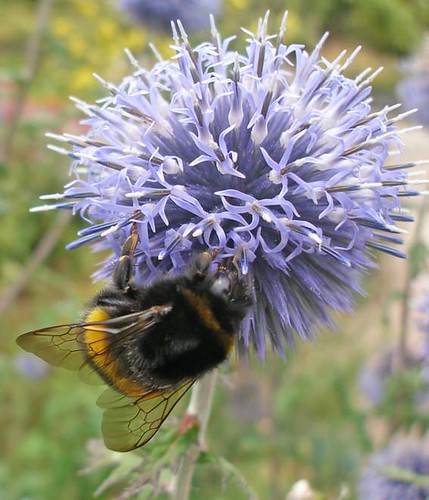Image may be NSFW.
Clik here to view.
Earlier this year, Sheila Horne was walking at Hacton Parkway, a public park and conservation area in Havering, East London. April is normally a good time to see insects in their prime so she was very surprised to find many dead and dying bees near the path. She alerted local naturalist, Tony Gunton who identified the insects as bumblebee queens from three species, red-tailed, buff-tailed and common carder. This was not a minor incident, there were as many as 500 bees affected.
Chemical analysis of the dead bees
Natural England was appointed to investigate the insect deaths and samples of dead bees were sent to FERA in York for analysis. The results were released in August and showed that the bees were contaminated with the neonicotinoid insecticide imidacloprid and two fungicides, flusilazole and epoxiconazole. Imidacloprid can be very poisonous to bees and bumblebees are more susceptible to this chemical than honeybees. Imidacloprid is currently subject to a two year partial ban for some agricultural uses in the EU. Neither fungicide on its own is especially toxic to bees although flusilazole was phased out this October because of its high toxicity to fish and because of other potential toxic effects.
A nearby field of oil seed rape as the source of the chemicals?
The chemical analysis raises two questions. Where did the bumblebees pick up these chemicals? Were these chemicals responsible for the bee deaths?
Neither question can be answered definitively but as so many dying bees were found together in one place, it seems likely that the source of the poisoning was close by. Hacton Parkway lies alongside arable farmland and at the time of the poisoning some of the land was planted with flowering oil seed rape, so it is a reasonable conclusion that the bees had been feeding there. Because of the chemical analysis, it was initially assumed that the crop had been planted using seed treated with imidacloprid ahead of the ban and that the imidacloprid had killed the bees. Natural England have recently concluded their investigation and found that in fact the seed used to plant the crop had been treated with another neonicotinoid, thiamethoxam. Neither imidacloprid nor epoxiconazole had been used on the crop and the last spraying with flusilazole was in November 2013. Analysis of the dead bees for thiamethoxam failed to detect any of the chemical but this could have been due to losses before the analysis.
What killed the bees?
So, why did these bees die? Because there are so many unanswered questions we cannot be sure. The dead bees were contaminated with imidacloprid but the oil seed rape crop was not the source. We can only assume that the bees fed elsewhere on imidacloprid-treated crops and were flying with this chemical in their systems. It is known that at typical field concentrations, imidacloprid does not kill bumblebees.
There is also the question of how the bees were exposed to the two fungicides if the oil seed rape had not been sprayed with these chemicals during the flowering season. As with the imidacloprid, we have to assume that the bees were exposed elsewhere. It is possible that the fungicides weakened the bees or made them more susceptible to the neonicotinoids. There is some evidence for such interactions for other insecticide/fungicide pairings.
Because the bees died close to the treated crop, the focus of lethality has to be on the thiamethoxam, now known to have been used on the oil seed rape. Although thiamethoxam is indeed an insecticide, there is evidence from one lab-based study and another field study (albeit lacking controls) that, at field-realistic concentrations, thiamethoxam is not lethal to bumblebees. I find it unlikely, therefore, that thiamethoxam alone killed the bees, providing the farmer followed safety guidelines.
We shall never know what actually happened at Hacton Parkway but my best guess is that these bees were flying with the three chemicals in their system and encountered the thiamethoxam-treated oil seed rape. When they fed from it, they picked up the additional neonicotinoid. Two neonicotinoids, with perhaps synergistic effects of the fungicides, were too much and they died.
The investigation is now closed!
The investigation is now closed and it will be impossible to resolve the many questions raised by this incident, which is a pity. Despite this uncertainty, the results of the chemical analysis stand. These bees died with three chemicals in their bodies: one neonicotinoid and two fungicides. They were also exposed to a second neonicotinoid. This was no laboratory experiment; this reflects what is happening around us when these chemicals are used. Have a look at this report to see more evidence of the widespread use of chemicals in UK farming. Our agricultural practices have led to this chemical blitz and the result is the deaths of important pollinators. How often is this occurring on a lower level but not being noticed or reported?
Image may be NSFW.
Clik here to view.
I should like to thank Tony Gunton (local naturalist) and Helen Duggan (Press Officer, Health and Safety Executive) for sharing information about this incident.